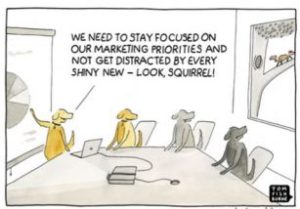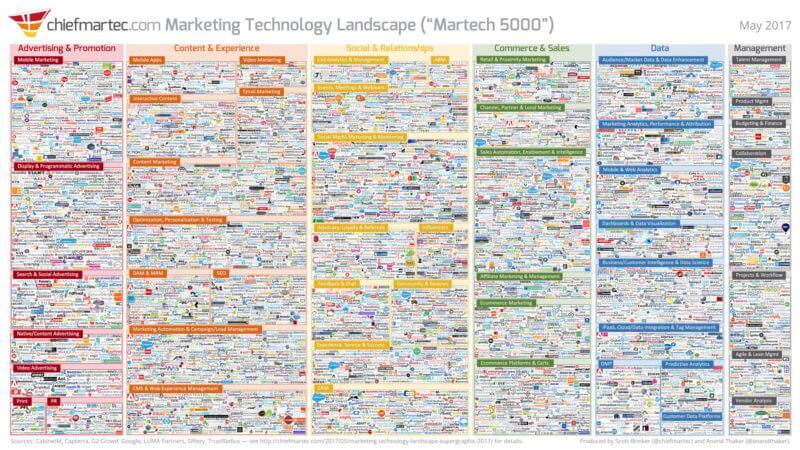First, it’s important to establish core objectives and focusing on the marketing automation functionality that addresses those goals. Hand in hand with this, businesses need to establish a solid foundation for succeeding with marketing automation. It starts with taking advantage of the following basic functionality:
• Email marketing
• Web forms
• Landing pages
• Lead scoring
• Measurement and reporting
According to Forrester Consulting, the vast majority of B2B marketers — more than 80% — consider it a core requirement of their jobs to comprehend and use marketing technology. The problem is that too many of them are getting dazzled by the latest-and-greatest tools before first developing a solid mastery of the core.
80% OF MARKETERS CONSIDER THE COMPREHENSION AND USE OF MARKETING TECHNOLOGY TO BE A CORE REQUIREMENT OF THEIR JOBS.
BUT why is it understandably distracting and confusing? – Below is the Marketing Technology Landscape Chart for 2017
MARKETING AUTOMATION CAN SUPPORT THE FULL SPECTRUM OF ENGAGEMENT SCENARIOS.
BOTH Inbound & Outbound Marketing:
Outbound Component:
1. The company reaches out to its database of contacts using its marketing automation to send an initial email suitable for consumption on a desktop, laptop and smartphone. The email encourages recipients to visit a landing page offering an E-book.
2. Those that visit the site to download the asset are asked to share some basic details — including their top priorities — in exchange for the download.
3. In addition to providing a link to the download, the “thank-you” page provides a link to a page tailored to those top priorities.
4. A follow-up email displays other assets the visitor may find useful based on these priorities.
Integration between marketing automation and the web content management systems enables marketing to ensure a relevant, contextual experience as the recipient responds to an outbound email and makes an inbound visit to the website in response. Both the email and web page can reflect an understanding of the prospective buyer.
Inbound Component:
1. For its email campaign, the marketing team creates and displays pay-per-click ads on relevant third-party sites to drive traffic to a dedicated landing page.
2. Once site visitors respond to these ads and land on the dedicated page, they are offered a download in exchange for information.
3. They also receive a follow-up email highlighting additional content assets that may be of interest.
Marketing automation can glean insights from campaign reporting and the information captured via the web content management system with each subsequent site visit — such as topics searched, content consumed and links clicked. In fact, as these prospective buyers continue to interact with the company’s emails, landing pages and other digital touchpoints, the marketing automation system would be fed details about their preferences and behaviors. This would in turn be used to fuel further interactions that trigger response and movement along the path to purchase.
According to Forrester Consulting, only 17% of B2B marketers responding to a recent survey identified themselves as leading in marketing technology maturity, and only 10% believe they can fully execute mature marketing automation strategies.
